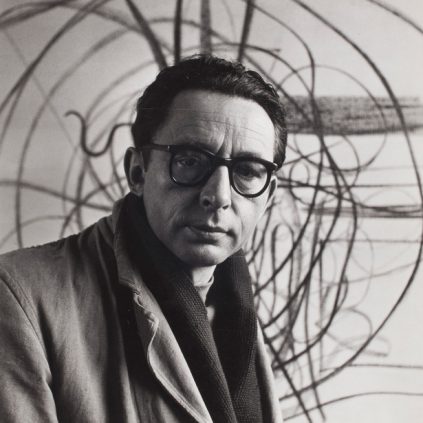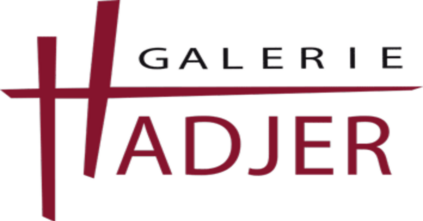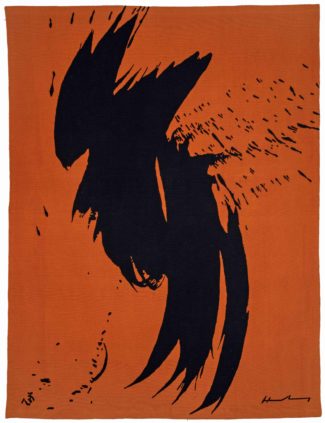Hans Hartung
Artwork
Biography
Hans Hartung: Abstract Art between Brush and Tapestry
Hans Hartung (1904-1989) was a German-born painter recognized as one of the leading figures of 20th-century abstract art. Born in Leipzig, Hartung developed an interest in drawing and painting from an early age. After studying at the Dresden Academy of Fine Arts, he moved to Paris in 1937, where he immersed himself in the vibrant artistic milieu of the French capital.
His career took a decisive turn after the Second World War, during which time he developed a unique pictorial language based on rapid, spontaneous gestures. Hartung used innovative techniques, such as freehand brushwork, roll painting and spray painting, to create dynamic compositions in which the energy of movement is palpable. His works are characterized by gestural forms, intertwining lines and a vibrant color palette, reflecting his quest for emotional and sensory expression.
Alongside his pictorial work, Hartung also took an interest in tapestry. In the 1960s, he collaborated with Georges Goldstein, one of the most respected tapestry workshops, to translate his compositions into textiles. This collaboration led to several tapestry commissions for the Mobilier National, showcasing his innovative approach to the textile medium. The tapestries created are inspired by his iconic works, integrating his abstract, gestural approach while offering a new tactile dimension to his art.
Hartung’s works, in both painting and tapestry, have earned him significant institutional recognition. In 1975, a retrospective at the Musée d’Art Moderne de la Ville de Paris celebrated his influence and role in the development of abstract art. This exhibition highlighted the diversity of his work, including his textile creations. In 2019, the Musée d’Art Moderne once again honored his work with a dedicated exhibition, underscoring Hartung’s enduring importance in the contemporary art landscape.
Today, we are pleased to present the works of Hans Hartung in our collection at Galerie Hadjer. His tapestries and paintings testify to the importance of experimentation and dialogue between different art forms in his work. These creations continue to inspire and amaze, affirming his essential place in the history of modern art. Come and discover Hartung’s vibrant legacy and his impact on contemporary textile art.


